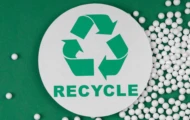A recent report released by the Plastic Recycling Industry Joint Green Action Alliance (hereafter referred to as the « White Paper ») has projected a promising future for global plastic recycling. As per the White Paper, with the advancement of global waste plastic recycling technology and increased capacity, the global waste plastic recycling rate is expected to reach 50% by 2030.
The Plastic Recycling Process
The White Paper explains that plastic recycling involves the collection and reprocessing of existing plastic waste, transforming it back into plastic products for consumers to use once or multiple times, thereby extending its lifecycle. The plastic recycling process is divided into five stages: plastic production, plastic consumption, plastic waste, plastic recycling, and reprocessing. In the closed-loop of China’s plastic recycling industry chain, each link holds significant importance. Only by connecting the entire loop can we achieve efficient recycling and resource utilization of plastic products.
Plastic: Not a Pollutant in Itself
The White Paper emphasizes that plastic itself is not a pollutant. The primary environmental impact of plastic waste comes from improper waste management, leading to environmental leakage. The long-term accumulation of discarded plastic in the environment results in pollution and wastage of energy resources. Developing a circular economy for plastics is one of the main solutions to the problem of plastic environmental leakage. By reducing plastic waste pollution and protecting the ecological environment, waste can be turned into treasure, allowing discarded plastic to regenerate economic value. This is the only way to ensure the stable operation of the plastic recycling loop.
The Joint Green Action Alliance
The Plastic Recycling Industry Joint Green Action Alliance was jointly initiated by Sinopec and 23 research institutes such as the Institute of Ecological Civilization and Circular Economy of Tongji University, front-end recycling, brand companies, and industry associations in April 2021. The alliance aims to promote the construction of a full industry chain communication and cooperation platform, create a new model of the plastic circular economy, and contribute to reducing plastic pollution and achieving China’s peak carbon and carbon neutrality goals.
Looking Ahead
As we look towards a future where global plastic recycling rates could reach 50%, it’s clear that the development of a circular economy for plastics plays a crucial role. By transforming waste into a resource, we can create a sustainable future for plastics and contribute to global environmental protection efforts.
May not be reproduced without permission:Rumtoo Recycling Machinery » Global Plastic Recycling Rates Expected to Reach 50% by 2030

 Rumtoo Recycling Machinery
Rumtoo Recycling Machinery Contact Us
Contact Us 

